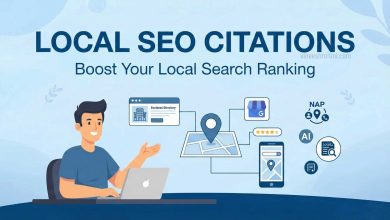2 Key Formulas for Understanding Your PPC Data
Pay-per-click (PPC) advertising is a popular method of driving traffic to a website or online platform. It allows advertisers to bid on specific keywords or phrases that are relevant to their business or industry, and only pay when a user clicks on their ad. While PPC can be a highly effective marketing strategy, it’s important to understand how to measure the success of your campaigns. In this essay, we’ll explore two key formulas for understanding your PPC data: cost per click (CPC) and return on investment (ROI).
Cost Per Click (CPC)
CPC is a metric that measures the average cost a business pays for each click on their PPC ad. It’s calculated by dividing the total cost of the ad campaign by the number of clicks it generated. For example, if a business spends $100 on a PPC campaign and receives 50 clicks, the CPC would be $2.00.
CPC is an important metric to track because it can help businesses determine the effectiveness of their PPC campaigns. A high CPC may indicate that a campaign is not targeting the right audience or that the ad copy is not resonating with potential customers. Conversely, a low CPC may indicate that a campaign is performing well and generating clicks at an affordable cost.
One strategy for improving CPC is to focus on improving ad relevance and targeting. Advertisers can use keyword research to identify relevant keywords and phrases that potential customers are searching for, and create ad copy that speaks directly to their needs and interests. Additionally, targeting options such as geographic location, device type, and audience demographics can help ensure that ads are shown to the right people at the right time.
Another strategy for improving CPC is to optimize landing pages for conversion. A landing page is the page that users are directed to after clicking on a PPC ad. Optimizing landing pages for conversion involves ensuring that they are relevant to the ad copy, visually appealing, and easy to navigate. By providing a seamless user experience, businesses can increase the likelihood that users will take the desired action, such as making a purchase or filling out a contact form.
Return on Investment (ROI)
ROI is a metric that measures the profitability of a PPC campaign. It’s calculated by dividing the revenue generated by the campaign by the total cost of the campaign. For example, if a business spends $100 on a PPC campaign and generates $500 in revenue, the ROI would be 400% ($500 revenue / $100 cost x 100%).
ROI is a critical metric to track because it helps businesses determine whether their PPC campaigns are generating a positive return on investment. A high ROI indicates that a campaign is profitable and worth continuing, while a low ROI may indicate that changes need to be made to improve performance.
One strategy for improving ROI is to focus on optimizing landing pages for conversion. As mentioned earlier, optimizing landing pages involves ensuring that they are relevant, visually appealing, and easy to navigate. By providing a seamless user experience, businesses can increase the likelihood that users will take the desired action, such as making a purchase or filling out a contact form. This, in turn, can lead to increased revenue and a higher ROI.
Another strategy for improving ROI is to track and analyze key performance indicators (KPIs) such as click-through rate (CTR) and conversion rate. CTR is the percentage of users who click on an ad after seeing it, and conversion rate is the percentage of users who take the desired action after clicking on an ad. By tracking these metrics, businesses can identify areas of their campaigns that may need improvement and make data-driven decisions to optimize performance.
Additionally, businesses can improve ROI by focusing on audience targeting and segmentation. By targeting specific demographics or interests, businesses can ensure that their ads are shown to the right people at the right time, which can increase the likelihood of conversion and ultimately lead to a higher ROI. For example, a business selling fitness equipment may want to target users who have shown interest in health and wellness, as they are more likely to be interested in purchasing their products.
It’s important to note that while ROI is an important metric to track, it’s not the only factor to consider when evaluating the success of a PPC campaign. Other factors such as brand awareness, customer engagement, and customer lifetime value should also be taken into account.
Conclusion
In conclusion, understanding and tracking key metrics such as CPC and ROI is essential for businesses looking to maximize the effectiveness of their PPC campaigns. By focusing on strategies to improve CPC and ROI, such as ad relevance and targeting, landing page optimization, and audience targeting and segmentation, businesses can optimize their campaigns for success and generate a positive return on investment.
However, it’s important to remember that PPC is not a one-size-fits-all strategy, and that what works for one business may not work for another. It’s important to continually test and iterate on campaigns, and to make data-driven decisions based on the performance of key metrics. By doing so, businesses can ensure that their PPC campaigns are effective, efficient, and drive the desired results.



